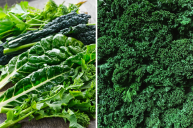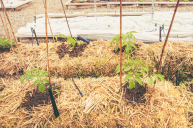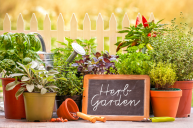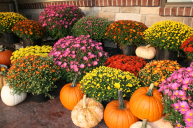Contrary to popular belief, summer is not the only time to be outside in the garden. In fact, there are a plethora of fruits, veggies, and plants that prefer the autumn time. So if you are an avid gardener, or are looking to eat more seasonally, starting a fall garden could be the perfect task for you. However, there are some things you should know before you dive in head first. Here are all of the things I wish I knew before starting my fall garden.
Videos by Wide Open Country
Benefits Starting A Fall Garden
You may be thinking, why would I start a fall garden? Everything dies in the winter, why put all that work in for such a short time? Well, The Prairie Homestead shares some great benefits to fall gardening. First " a fall garden can increase the amount of food you grow and also improves your soil for success in the spring." Not to mention in the fall you deal with fewer bugs because most die after the first frost. Add that with cooler weather, which is good for you and your plants, and all I am seeing are benefits.
Tips I Wish I Knew
So, have I convinced you that you want to start a fall garden? Well that's great! We need more gardeners out there. However, do not make the mistake I did and just jump right in with zero clue of what you are doing. Learn from me! Here are the top things I wish I knew before starting my fall garden.
1. Know Your Plants

First and foremost do the research and find out what plants thrive in autumn weather. Just because some plants can be harvested throughout the autumn months does not mean they are the best ones to work with. You want to pick durable plants that will handle the cooling temperatures and even some frost. The Prairie Homestead shares the three categories of veggies that are best for fall. They are the cabbage family, greens, and root vegetables.
So, for your fall garden you could plant things like Brussels sprouts, cabbage, cauliflower, spinach, chard, lettuce, radishes, beets, and carrots. Additionally, they share that garlic is a plant you always want to plant in the fall. That is because it grows over the winter, yea I wish I had known that ahead of time.
2. Know When To Plant

Don't be like me and just randomly decide to drive to Home Depot one day and get started. No, there is a method to the madness, and if you don't follow it you will end up spending a lot of money on a lot of dead plants. First thing you need to know is that you do not start a fall garden in the fall. Confusing right? You actually start a fall garden in the summer. Around mid-summer is when you will begin planting your seeds for your fall crops. You want to ensure that you start your seedlings 12 weeks before the frost.
3. Annuals vs. Perennials

The first two tips were in regards to vegetables or produce, but what if you want your fall garden to be flowers instead? Well one thing you should know is the difference between annuals and perennials. Second, you should know how to take care of each of them. Annuals need to be replanted each year. They live out their entire life cycle and then die. Where as perennials live for multiple growing seasons.
When preparing your fall garden you want to remove any annuals that you may have had. Then, something I wish I knew, is that you need to cut your perennials back. Proven Winners shares information on how to do this. They say, "Once your perennials have gone dormant, it's a good idea to clean at least some of their foliage out of garden beds." They mention how slugs often lay their eggs in the dead foliage so removing it can be beneficial to your garden.
However, they do not recommend doing this during fall. It should be done beforehand. Similarly, they share a list of perennials that you SHOULD NOT cut back in the fall.
- Evergreen or semi-evergreen perennials
- Perennials with woody stems
- Perennials with winter interest
These three tips should be enough to get you started. Just know there is always more to learn about the incredible world of gardening!




